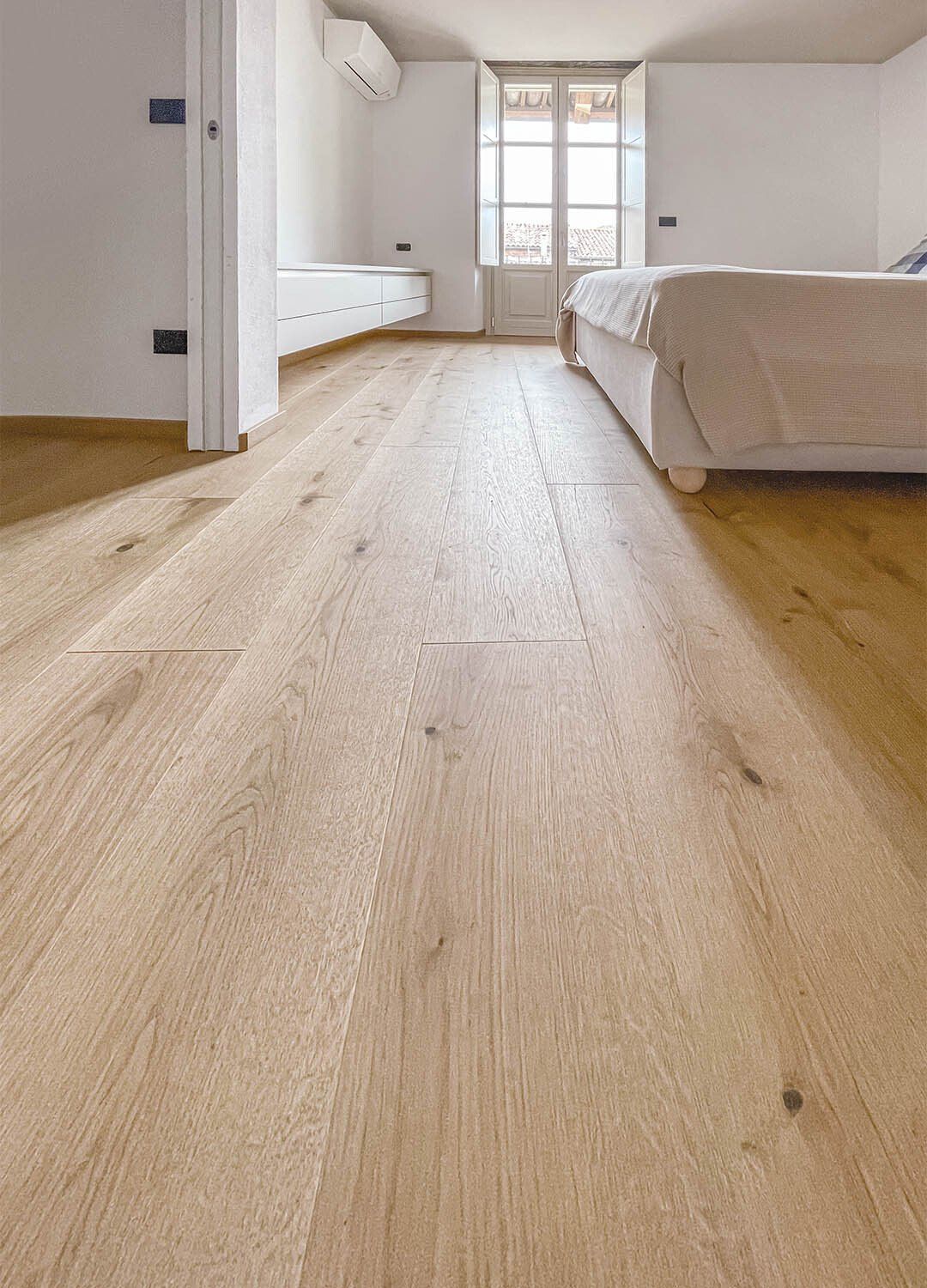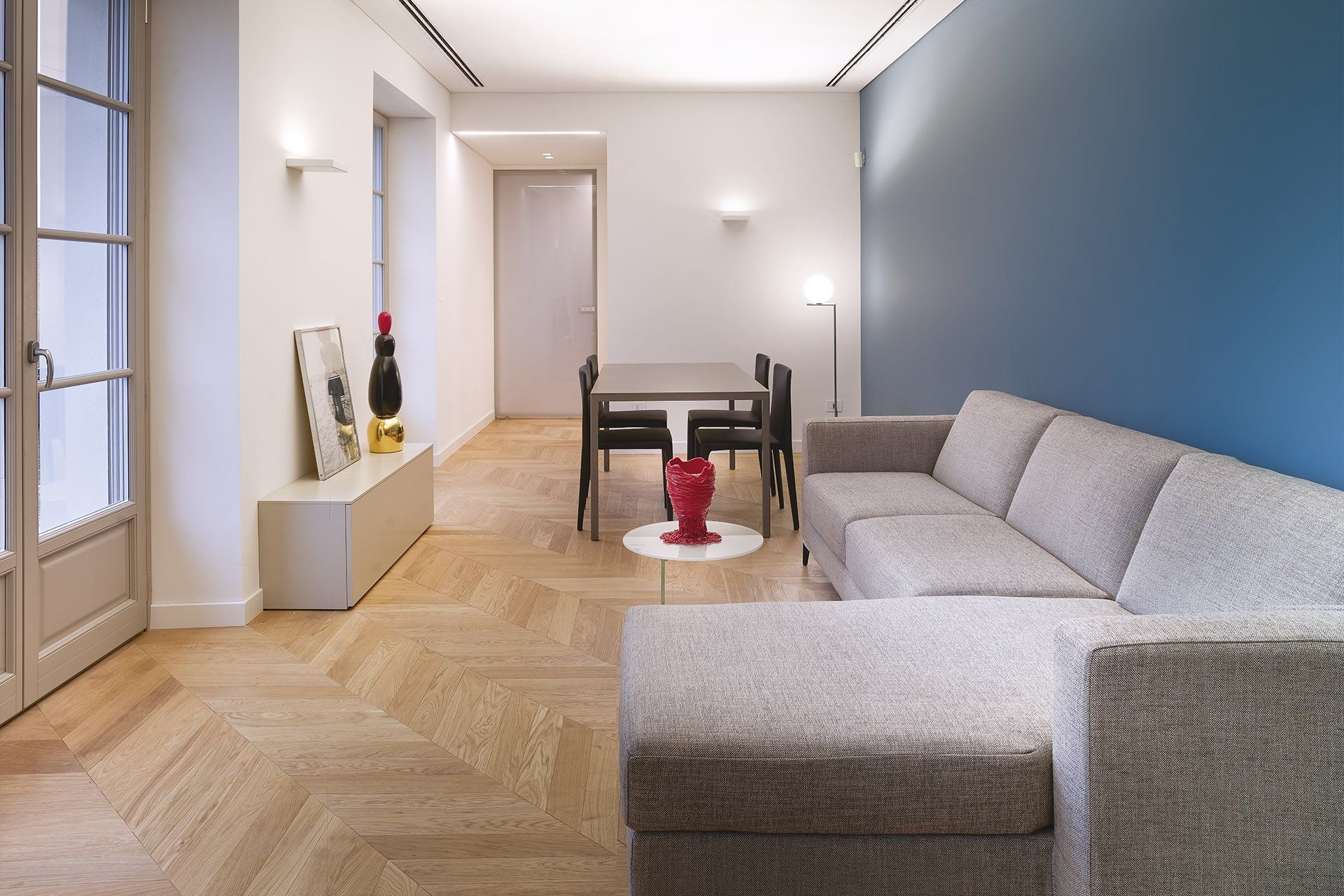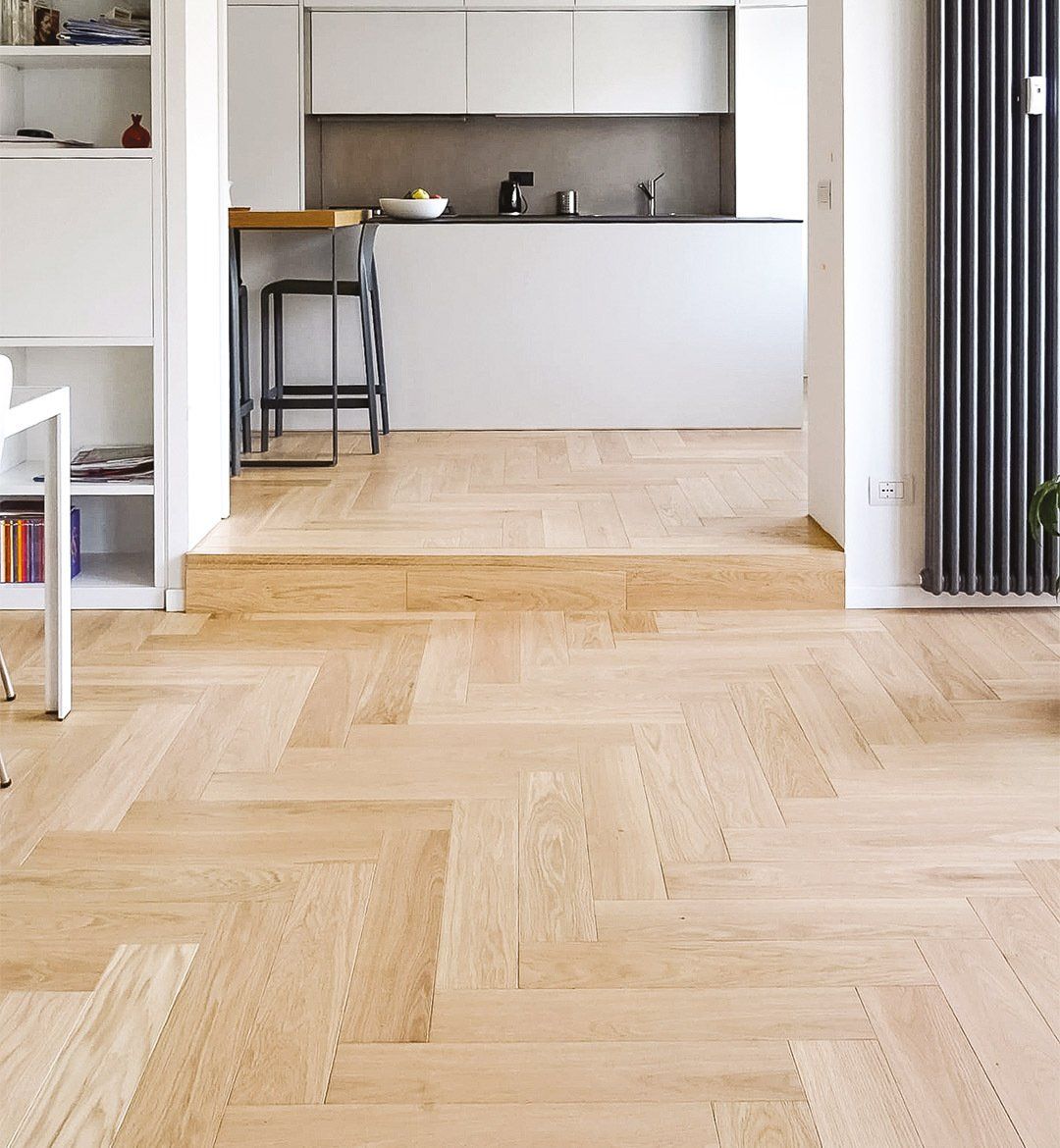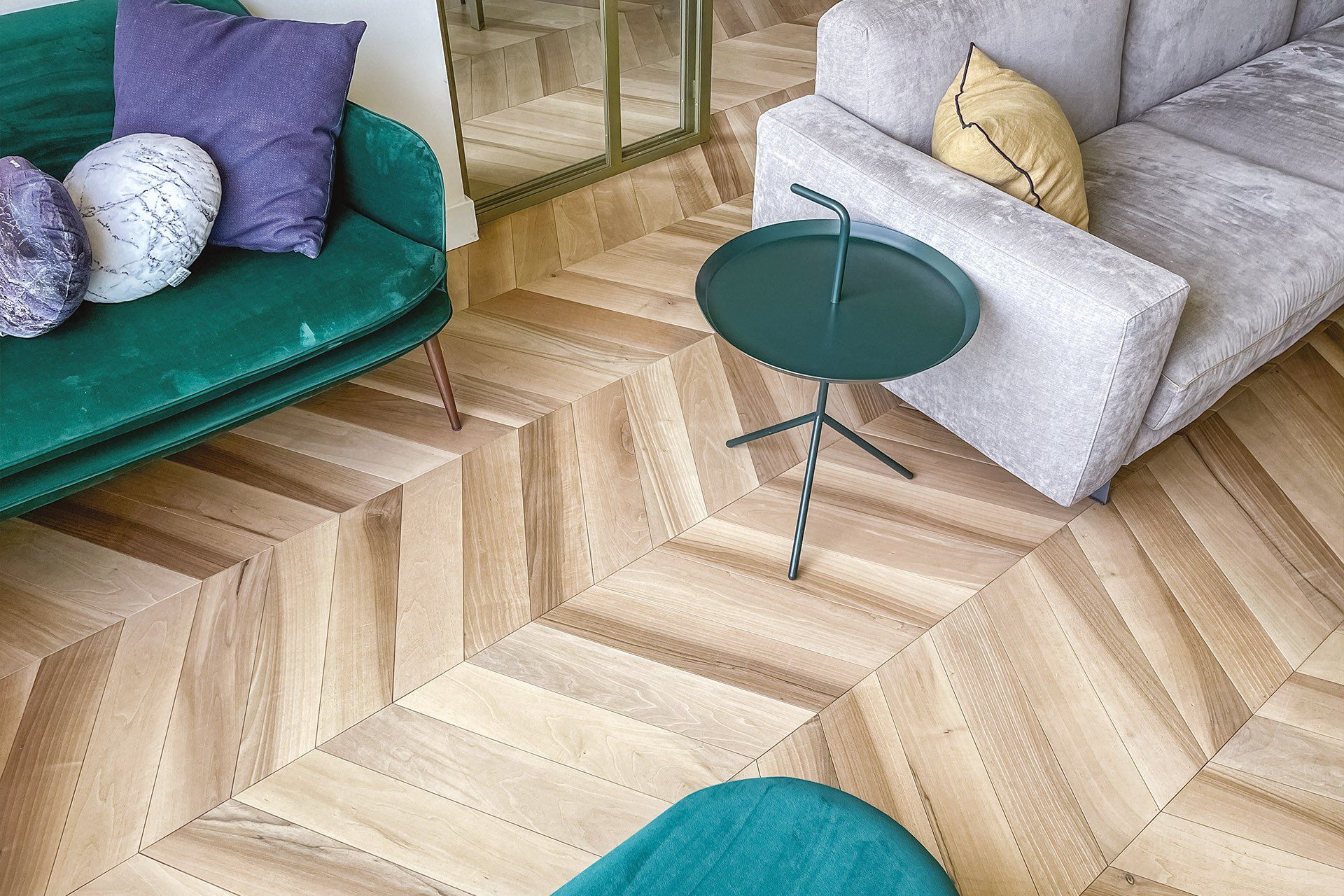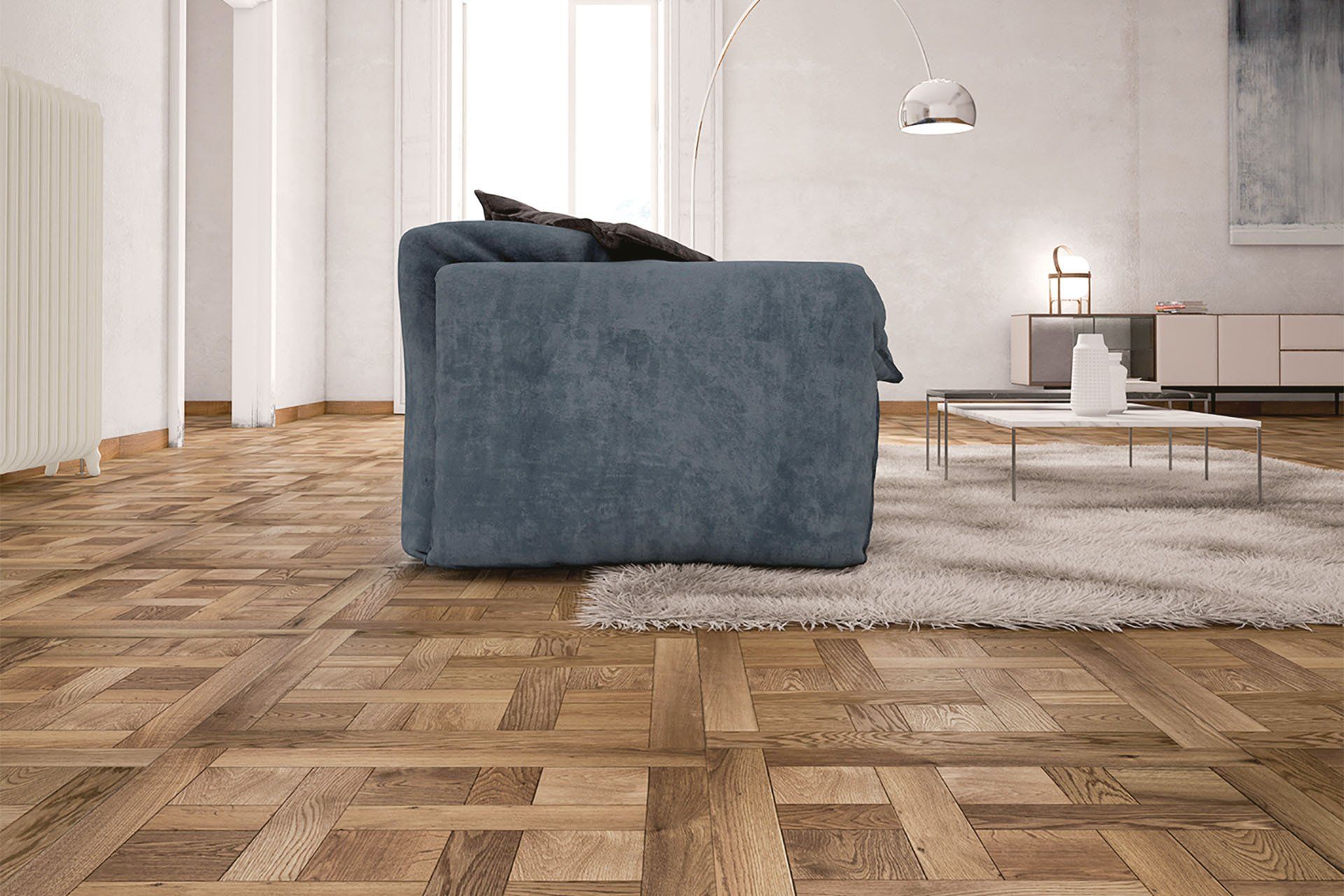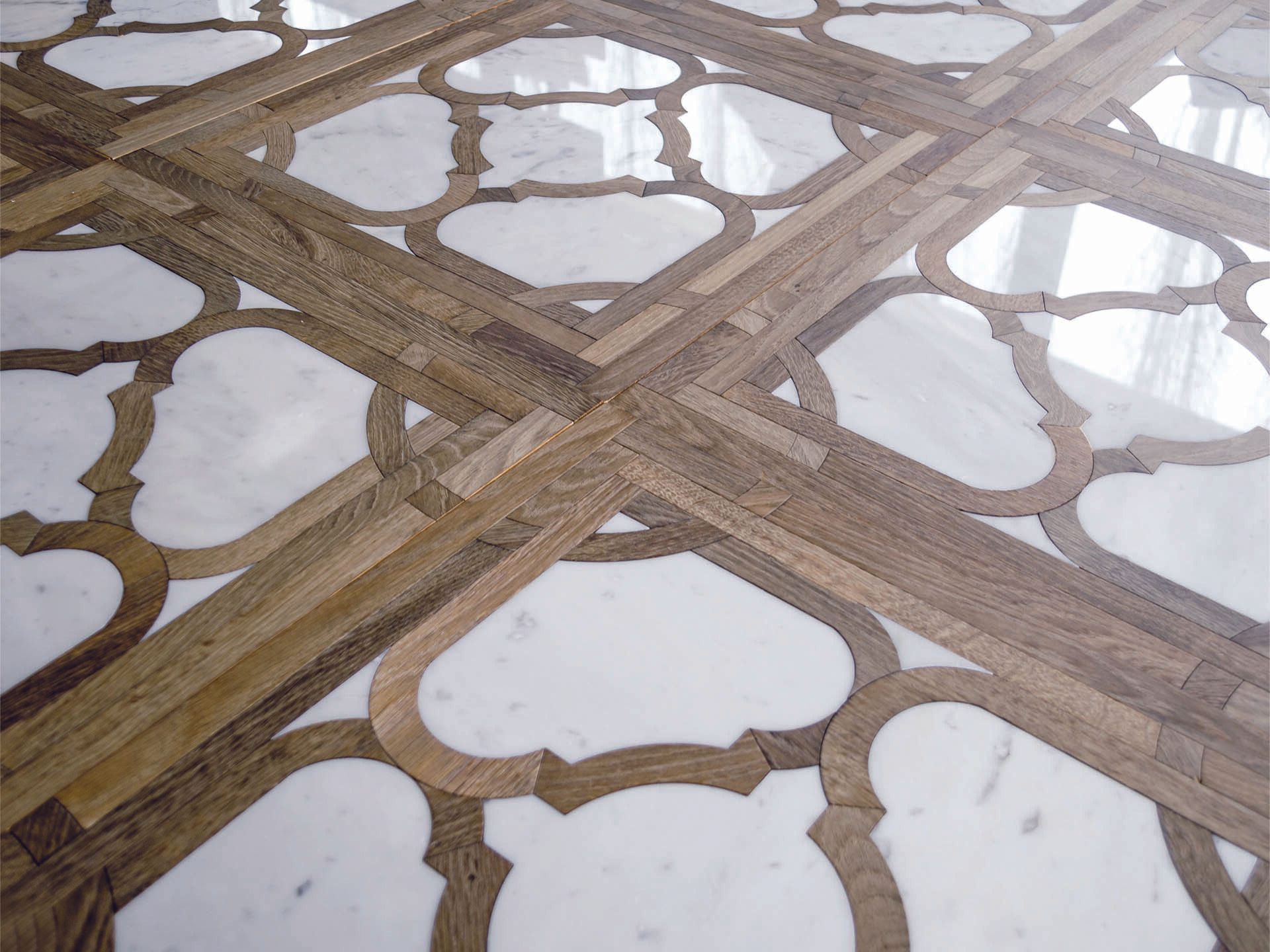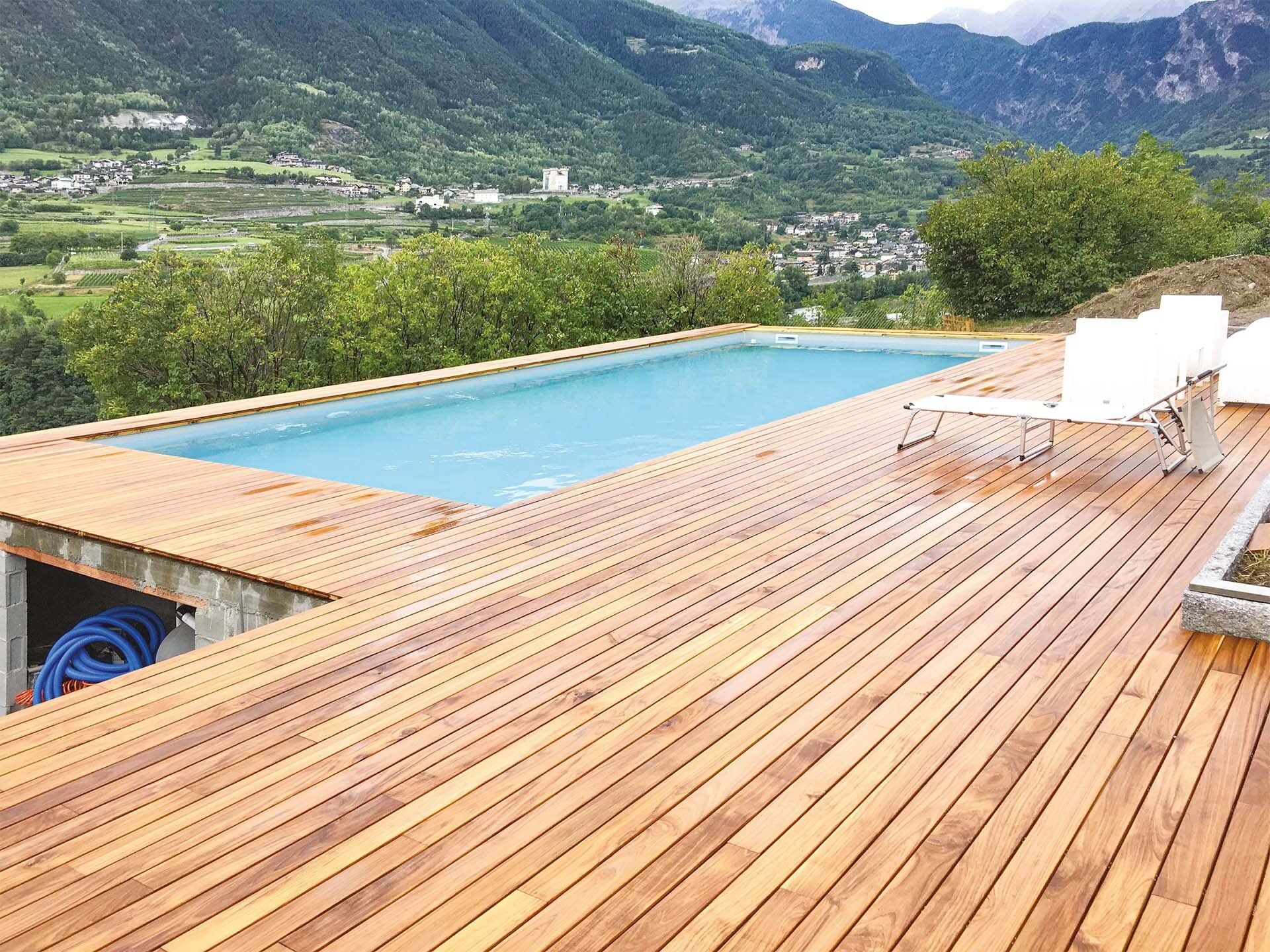Headquarters address
Via San Martino Nisocco, 2
12046 Montà (CN) - Italy
FAQ
FAQ
Frequently asked questions regarding the world of parquet
Here, you find the answers to some frequently asked questions regarding the world of parquet. Few, simple suggestions that allow you to choose the flooring that best suits your needs and to fully enjoy all its qualities.
-
Which is the difference between a solid wood floor and a pre-finished floor?
The traditional solid wood floor is composed solely of a solid wood layer. The plywood parquet is instead composed of 2 or 3 layers of wood that are glued together to form a single board. The top layer is called noble wood and is composed of precious woods with a high resistance to wear.
-
Can the parquet be installed in settings as bathroom or kitchen?
Yes, by choosing the right woods and taking some precautions we can have parquet in the bathroom or in the kitchen.
First, it is important to remember that water, if not stagnant, does not damage the parquet. It will therefore be sufficient to intervene quickly to dry the floor.
Another important precaution is to ventilate the area. In a room like the bathroom, for example, to take care of the parquet, always open the windows after use of showers or similar, to eliminate any humidity and prevent this from altering the floor.
With this in mind, we can say that parquet can be installed potentially anywhere.
Before proceeding, however, it is important to do the right choice of the wood species. It is in fact necessary to avoid all woods that tend to absorb humidity, and opt for a moist resistant wood. Among the most indicated woods, Oak, Doussiè, Iroko and Teak are particularly stable woods even in rooms with a high degree of humidity.
-
Why choosing a wooden floor rather than a laminate floor?
A laminate parquet while giving the feeling of a wooden floor, is not a living material, but an image. The grain of the wood is repeated several times, unlike real wood instead, capable of giving life to a lively floor, natural and unique, where the boards are always different from each other.
Parquet is also a timeless product that will never go out of style, a classic surface capable of giving greater value to our property.
Laminate can easily be damaged, unlike a wooden floor that can be repaired with sanding, re-oiling and re-painting.
-
How to clean a parquet?
The daily maintenance of a parquet is extremely simple and fast. With some simple precautions, we can keep the wooden floor in good condition over time. First, we need to periodically remove dust, and then clean the surface with a damp cloth soaked in water and neutral detergent. Washing a wooden floor should never be done with water alone, which does not guarantee an effective cleaning action, as it does not completely degrease the floor surface.
We need to check the type of finish of the parquet, to understand the most appropriate maintenance methods, for example if it is a painted or oiled floor.
-
During laying, does the room have to follow special requirements?
To get an excellent laying we need to check, first of all, the sub-floor. The sub-floor must have fundamental characteristics to be suitable for receiving the parquet and maintaining it structurally stable over time:
- compactness
- planarity
- correct height with respect to the walking surface
- cleaning
- right dehydration
During laying humidity of air must be between 45% and 65% with a temperature not lower than 15°C.
Humidity of the sub-floors must not exceed 2% by weight for normal or rapid cementitious screeds, 1.7% for heated screeds.
The control of humidity of the screed must be carried out using a carbide hygrometer immediately before laying.
For laying on heating/cooling floors, make sure that the coil is covered by at least 3 cm of screed, that the maximum temperature of the surface does not exceed 23-24°C and that the heating is activated gradually according to the schemes envisaged for laying of parquets.
The suitability of the spaces and of the laying surface must be previously ascertained by the person who undertakes the laying of the wooden flooring, as required by the UNI 11265 standard.
-
How laying correctly?
Open the packages at the moment of laying, in rooms with installed windows and dry plasters. Before laying, the installer, is required to check the moisture content of the parquet ( 7% ± 2% ).
In relation to the natural variability of the material, during installation, the installer mixes elements from several packs in order to ensure a homogeneous and harmonious overall aesthetic appearance.
As regulated by the UNI 11265 technical standard, any evident flaws or defects of the wooden elements must be reported by the Installer, to whom responsible, before laying. Use of materials, by the buyer, constitutes acceptance of the same and recognition of correspondence to those agreed, resulting in the waiver of any dispute.
USEFUL LINKS
WHERE TO FIND US
Via San Martino Nisocco, 2
12046 Montà (CN) - Italy
Tel. +39 0173 976520 - Fax +39 0173 974763
Email info@giorio.it
Showroom Milano
Via Canonica, 5
20154 Milano (MI) - Italy
Tel. +39 0287381130 - +39 389 0591470
Alma is a trademark of the Giorio srl group - VAT 03207450044 - Registered office: Via San Martino Nisocco, 2 - 12046 Montà (CN) - Privacy - Sitemap - Site created by etinet.it
Subscribe to the newsletter
Stay up to date on all our news!
